Germany's Fairytale Towns That Tourists Haven't Found Yet

Germany's Fairytale Towns That Tourists Haven't Found Yet
Germany is renowned for its fairytale landscapes, with castles perched on hilltops, half-timbered buildings lining cobblestone streets, and town squares that seem plucked from storybooks. While destinations like Rothenburg ob der Tauber and Neuschwanstein Castle draw throngs of visitors, countless equally charming towns remain undiscovered by mass tourism. These hidden gem destinations offer authentic German culture, breathtaking architecture, and immersive experiences without the crowds. This guide will introduce you to Germany's most enchanting under-the-radar towns that deserve a spot on your travel itinerary.
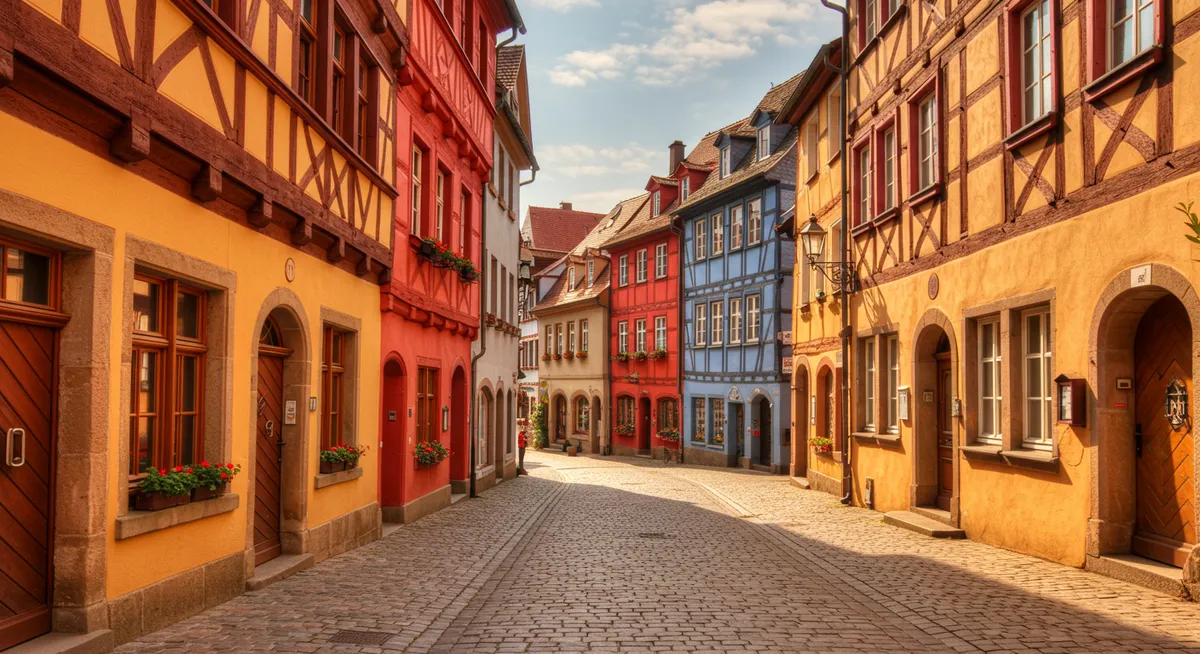
1. Quedlinburg: A UNESCO Treasure
Nestled in the Harz Mountains of former East Germany, Quedlinburg stands as one of Europe's best-preserved medieval towns. With over 1,300 half-timbered houses spanning eight centuries, this UNESCO World Heritage site offers an extraordinary glimpse into architectural history. Despite its exceptional cultural significance, Quedlinburg remains refreshingly uncrowded compared to Germany's more famous destinations.
What Makes It Special
- Architectural Wonderland: The town boasts the highest concentration of half-timbered houses in Germany, many dating back to the 16th and 17th centuries
- Collegiate Church: The Romanesque St. Servatius Church houses one of Germany's most valuable church treasures
- Castle Hill: The founding site of the medieval German state offers panoramic views of the town's red rooftops
- Literary Significance: Quedlinburg inspired numerous German folktales and was a center for illuminated manuscripts
Local Experiences
Wander the narrow, winding streets of the Altstadt (Old Town), where each building tells a story through its distinctive timber patterns. Visit the Quedlinburg Treasury in the Castle Museum to see rare medieval artifacts including the oldest illustrated Latin Bible in Germany. Sample local Harz Mountain specialties like Harzer cheese and game dishes in traditional restaurants housed in centuries-old buildings.
Getting There
Quedlinburg is located about 200 km (125 miles) southwest of Berlin. It's accessible by regional train from Berlin (about 3 hours) or by car via the A9 and A14 highways. The town is compact enough to explore on foot, with most major sights within a 15-minute walk of the Market Square.
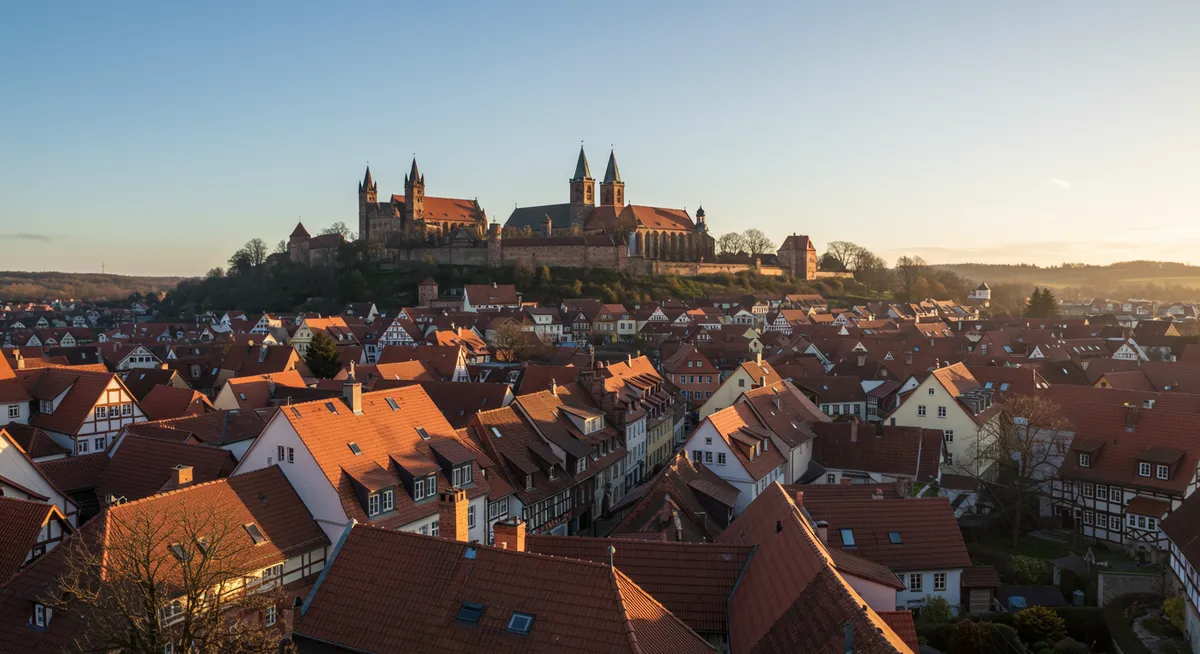
2. Bacharach: Rhine Valley Jewel
Set along the most picturesque stretch of the Rhine River, Bacharach embodies the romantic vision of a German riverside town. Surrounded by medieval walls, crowned by a hilltop castle, and nestled amid terraced vineyards, Bacharach captures the essence of Rhine Valley charm without the tour bus crowds that dominate larger towns in the region.
What Makes It Special
- Scenic Location: Set dramatically between the Rhine River and steep vineyard-covered slopes
- Castle Stahleck: A 12th-century fortress turned youth hostel offering spectacular river views
- Defensive Walls: Well-preserved medieval town walls with walkable sections and watchtowers
- Wine Heritage: Centuries of winemaking tradition producing exceptional Riesling wines
Local Experiences
Stay overnight in Castle Stahleck for a unique accommodation experience with breathtaking views. Hike the surrounding vineyard paths for panoramic vistas of the Rhine Valley. Taste local Riesling wines in traditional Weinstuben (wine taverns), many housed in buildings dating back to the 16th century. Visit the ruins of the Gothic Wernerkapelle, a hauntingly beautiful partially completed chapel from 1287.
Getting There
Bacharach is located in the Upper Middle Rhine Valley, about 90 km (56 miles) west of Frankfurt. It's easily accessible by regional train on the scenic Rhine route between Mainz and Koblenz. The town is small enough to explore on foot, though the hike up to Castle Stahleck requires moderate fitness.
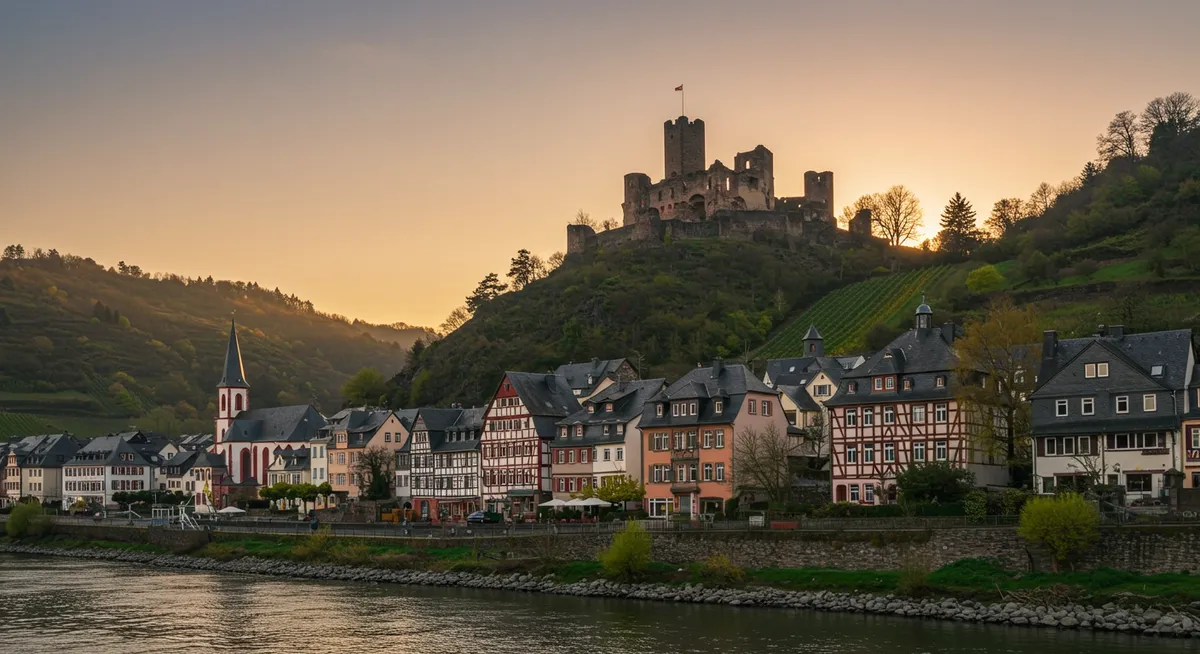
3. Meersburg: Lake Constance Gem
Perched on a steep vineyard-covered hillside above Lake Constance (Bodensee), Meersburg captivates visitors with its dual personalities: a medieval Old Town crowned by Germany's oldest inhabited castle, and a Baroque New Town built by prince-bishops. While nearby destinations like Lindau draw tour groups, Meersburg maintains a more authentic atmosphere despite its undeniable beauty.
What Makes It Special
- Dramatic Setting: Terraced layout offering spectacular views over Lake Constance and the Alps
- Alte Burg: The oldest inhabited castle in Germany, with sections dating to the 7th century
- Baroque Palace: The New Castle (Neues Schloss) showcases lavish 18th-century royal apartments
- Wine Culture: Home to the region's oldest vineyard and exceptional Bodensee wines
Local Experiences
Tour the ancient Alte Burg (Old Castle) to explore medieval dungeons, armory, and living quarters with original furnishings. Stroll the lakeside promenade for views extending to Switzerland and Austria on clear days. Sample local wines made from grapes grown on the sunny slopes surrounding the town. Take a refreshing swim at the town's thermal spa or lake beach during summer months.
Getting There
Meersburg is located on the northern shore of Lake Constance (Bodensee) in southern Germany, about 180 km (112 miles) southwest of Munich. It's accessible by car or by ferry from Konstanz, which has train connections to major cities. The town is built on a steep hillside, so comfortable walking shoes are essential.
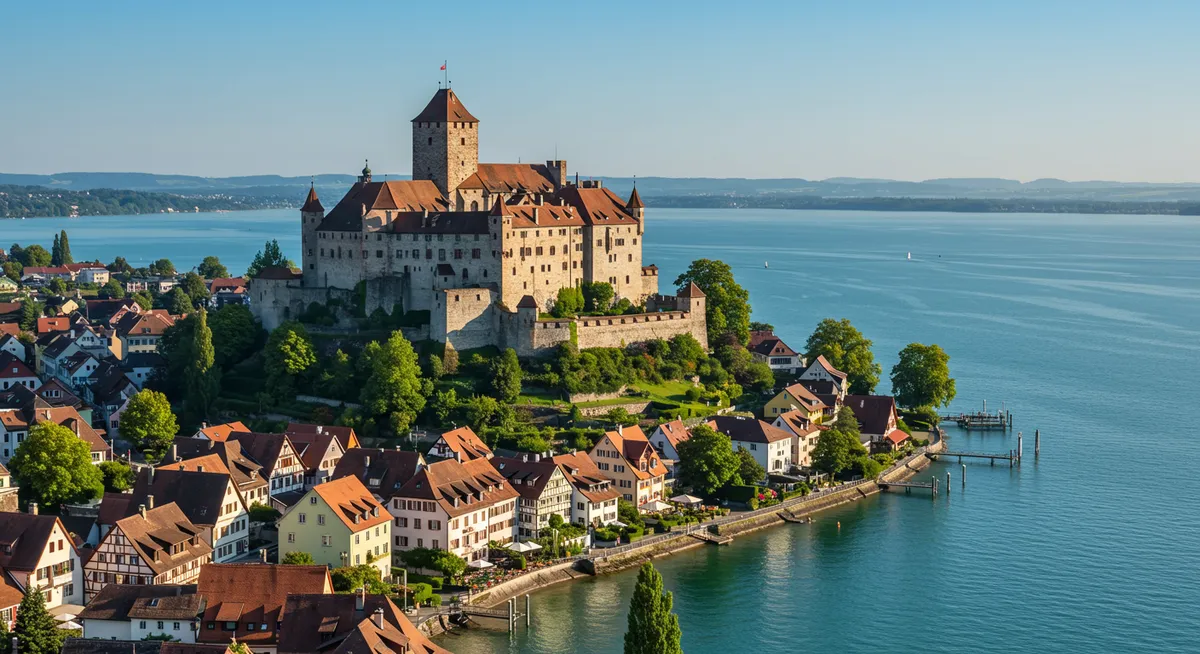
4. Monschau: Eifel Mountains Treasure
Tucked into a narrow valley in the Eifel Mountains near the Belgian border, Monschau appears frozen in time. The town escaped bombing during World War II, leaving its 300-year-old half-timbered houses perfectly preserved. A river winds through the town center, crossed by small bridges that enhance its storybook appeal. While popular with regional visitors, Monschau remains largely undiscovered by international tourists.
What Makes It Special
- Valley Setting: The town is nestled dramatically between steep hillsides along the Rur River
- Architectural Preservation: Exceptionally well-preserved 18th-century townscape with minimal modern intrusions
- Textile Heritage: Once a prominent center for cloth production, showcased in the Red House museum
- Culinary Tradition: Famous for traditional mustard production and Printen (a type of gingerbread)
Local Experiences
Visit the Red House (Rotes Haus), an elegant 18th-century cloth manufacturer's home showcasing the town's textile heritage. Sample and purchase traditionally-made mustard at the historic Senfmühle (mustard mill). Hike the surrounding Eifel National Park trails for spectacular views of the town from above. Enjoy Printen and coffee at a riverside café while watching the Rur flow beneath centuries-old buildings.
Getting There
Monschau is located in western Germany near the Belgian border, about 30 km (19 miles) south of Aachen. It's best reached by car, though buses connect it to Aachen, which has train connections to major cities. The town center is pedestrianized, with parking available at the town's edge.
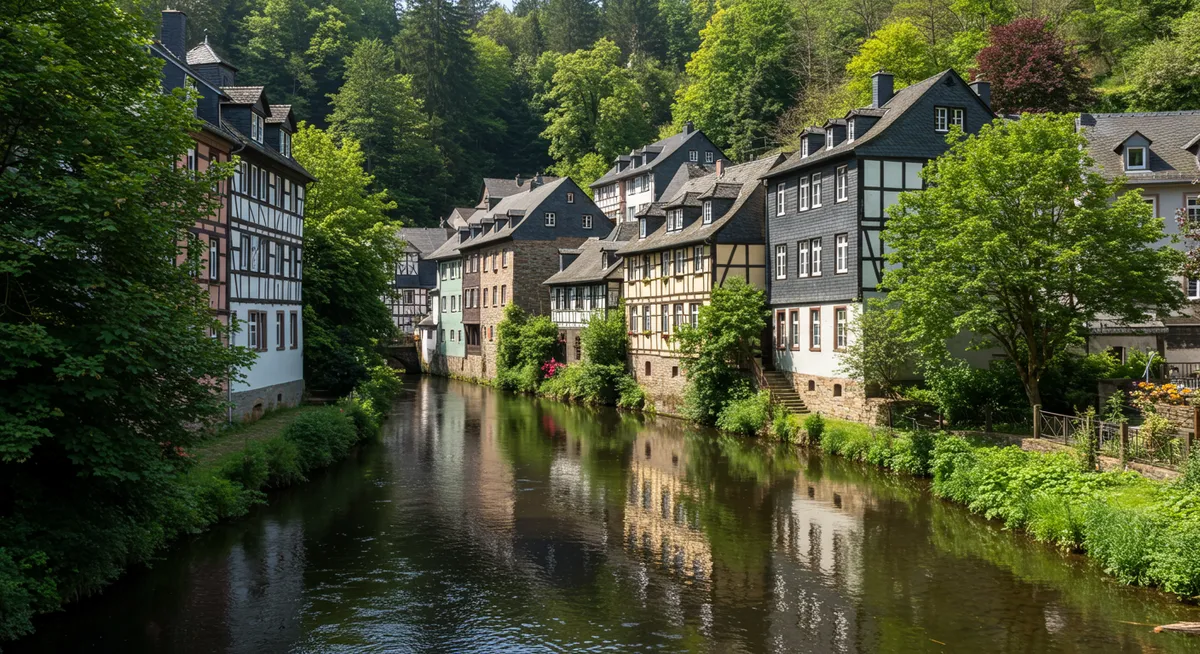
5. Görlitz: The Easternmost Gem
Straddling the German-Polish border at the easternmost edge of Germany, Görlitz boasts an extraordinary architectural heritage spanning 500 years. The town emerged from World War II remarkably intact and has been meticulously restored since German reunification. Its unique atmosphere and pristine buildings have made it a favorite filming location, appearing in movies like "The Grand Budapest Hotel" and "Inglourious Basterds," yet it remains refreshingly uncrowded.
What Makes It Special
- Architectural Showcase: Over 4,000 listed buildings representing Gothic, Renaissance, Baroque, and Art Nouveau styles
- Border Location: The town is divided by the Neisse River, with the eastern part in Poland (Zgorzelec)
- Film Set Appeal: Known as "Görliwood" due to its popularity as a filming location
- Holy Grave: A unique 15th-century replica of Jerusalem's Holy Sepulchre
Local Experiences
Walk across the Neisse bridge to visit two countries in one day, experiencing both German and Polish culture. Marvel at the elaborate staircases inside the townhouses—a local architectural specialty worth seeking out. Visit Schönhof, Germany's oldest Renaissance civic building, now housing a Silesian Museum. Sample Silesian dumplings and other regional specialties that reflect the area's multicultural heritage.
Getting There
Görlitz is located on Germany's eastern border with Poland, about 100 km (62 miles) east of Dresden. It's accessible by direct regional train from Dresden (about 1.5 hours) or Berlin (about 3 hours). The historic center is compact and best explored on foot.
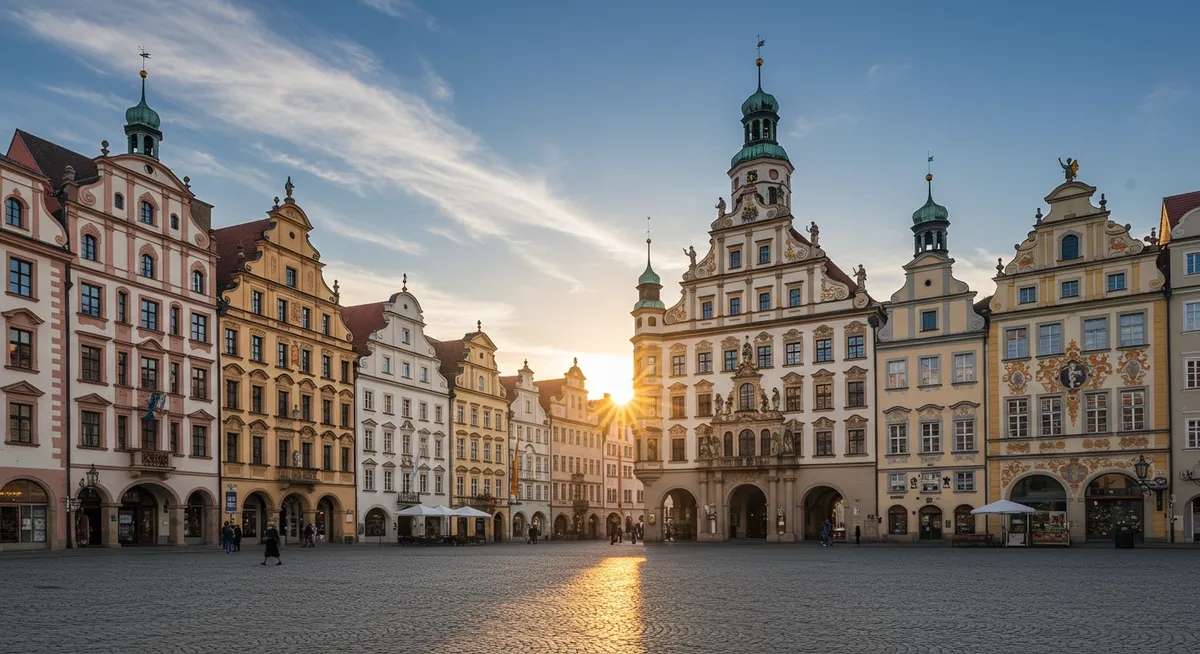
6. Tübingen: Scholarly Charm
Set along the Neckar River in Baden-Württemberg, Tübingen combines the energy of a university town with the romantic appeal of medieval architecture. Dominated by its hilltop castle and distinguished by colorful waterfront buildings, Tübingen delivers fairytale visuals without feeling like a museum. While German and local visitors appreciate its charms, international tourists often overlook this intellectual haven in favor of more famous Black Forest destinations.
What Makes It Special
- University Influence: Home to one of Germany's oldest universities (founded 1477), creating a youthful, intellectual atmosphere
- Riverfront Beauty: Colorful medieval buildings reflected in the Neckar River create postcard-worthy scenes
- Literary Heritage: Associated with poets like Friedrich Hölderlin and Hermann Hesse
- Hohentübingen Castle: A Renaissance castle housing university collections including ancient artifacts
Local Experiences
Take a traditional wooden punt boat (Stocherkahn) along the Neckar River for unique perspectives of the waterfront buildings. Visit the Hölderlin Tower, where the famous poet spent the last 36 years of his life. Explore the botanical gardens maintained by the university, featuring plants from around the world. Join locals at the market square, where farmers' markets have been held continuously since 1692.
Getting There
Tübingen is located about 40 km (25 miles) south of Stuttgart in southwestern Germany. It's easily accessible by direct regional train from Stuttgart (about 45 minutes). The historic center is compact and pedestrianized, perfect for exploring on foot.

7. Goslar: Imperial Splendor
Nestled at the foot of the Harz Mountains, Goslar rose to prominence as a seat of the Holy Roman Empire and grew wealthy from the silver mines of the nearby Rammelsberg. This UNESCO World Heritage town showcases over 1,500 half-timbered buildings, imperial palaces, and mining heritage spanning a millennium. Despite its historical significance, Goslar receives far fewer international visitors than its historical importance might suggest.
What Makes It Special
- Imperial Palace: The Kaiserpfalz, an 11th-century imperial residence of the Holy Roman Emperors
- Mining Heritage: The Rammelsberg Mine, in continuous operation for over 1,000 years until 1988
- Architectural Diversity: Magnificent buildings spanning Romanesque, Gothic, Renaissance, and Baroque styles
- Market Square: Dominated by the Gothic Town Hall and the Kaiserworth Guildhall with its ornate façade
Local Experiences
Tour the Rammelsberg Mine Museum to explore the tunnels and learn about medieval mining techniques that made the town wealthy. Visit the Imperial Palace (Kaiserpfalz) to see the impressive throne room and unique painted hall. Listen to the elaborate glockenspiel on the Market Square's Kaiserworth building, which plays three times daily. Sample Harzer Roller cheese and hearty local specialties in centuries-old restaurants.
Getting There
Goslar is located in Lower Saxony at the northwestern edge of the Harz Mountains, about 250 km (155 miles) west of Berlin. It's accessible by regional train from Hannover (about 1.5 hours) or by car. The historic center is compact and best explored on foot.
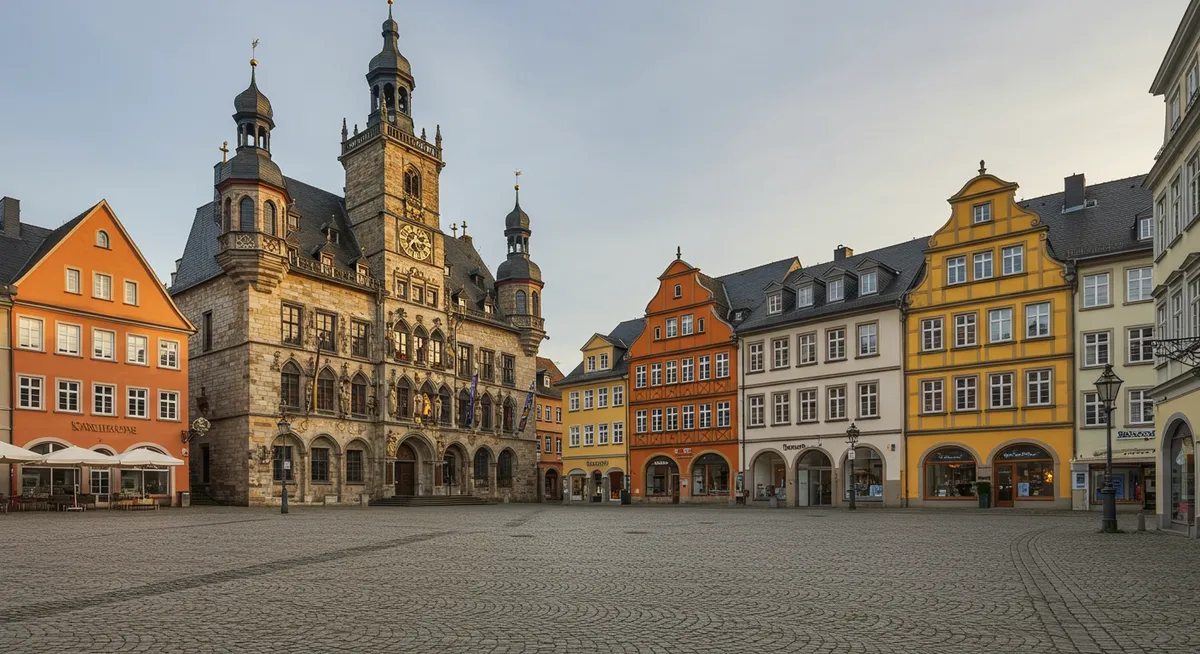
8. Mittenwald: Alpine Perfection
Nestled in the Bavarian Alps near the Austrian border, Mittenwald embodies the quintessential alpine village experience. Famous for its violin-making tradition and stunning mountain backdrop, this town features colorfully painted houses adorned with intricate Lüftlmalerei (facade frescoes) depicting religious and pastoral scenes. While other alpine towns draw tour buses, Mittenwald maintains a more authentic mountain community atmosphere.
What Makes It Special
- Painted Facades: Elaborate Lüftlmalerei frescoes adorn many buildings in the town center
- Violin Heritage: A 300-year tradition of crafting fine string instruments celebrated in a dedicated museum
- Alpine Setting: Dramatic mountain backdrops including the Karwendel and Wetterstein ranges
- Outdoor Paradise: Gateway to exceptional hiking, skiing, and mountain adventures
Local Experiences
Visit the Geigenbaumuseum (Violin Making Museum) to learn about the craft that has defined the town since the 1600s. Take the Karwendel cable car for breathtaking alpine panoramas without strenuous hiking. Follow the self-guided Lüftlmalerei tour to discover the town's most impressive painted buildings. Enjoy authentic Bavarian cuisine and local beer in traditional mountain restaurants.
Getting There
Mittenwald is located in southern Bavaria near the Austrian border, about 100 km (62 miles) south of Munich. It's accessible by direct regional train from Munich (about 2 hours) or by car. The town center is small and easily explored on foot, though hiking in the surrounding mountains requires appropriate gear.

Travel Tips for Visiting Germany's Hidden Gem Towns
To make the most of your experience exploring these charming destinations, consider these practical recommendations:
Best Time to Visit
Late spring (May-June) and early autumn (September-October) offer ideal conditions with pleasant temperatures, fewer tourists, and active local cultural scenes. These shoulder seasons allow you to experience towns as locals do, with open museums and restaurants but without summer crowds. Many towns host wine festivals in autumn and Christmas markets in December, offering special seasonal experiences.
Transportation
Germany's excellent rail network connects most of these towns, though some may require regional trains and connections. For maximum flexibility, especially when visiting multiple hidden gems, consider renting a car. Most historic town centers are pedestrianized, so plan to park at the edge of town and explore on foot. Purchase regional transport passes when available for unlimited travel and discounted attraction entry.
Accommodations
For an authentic experience, stay in historic properties within these towns—many half-timbered buildings house charming family-run hotels or guesthouses (Pensionen). Book well in advance for weekend stays, especially during summer and festival periods. Consider unique accommodation options like Bacharach's castle youth hostel (open to travelers of all ages) or historic guild houses converted to boutique hotels.
Language
While tourist hotspots in Germany typically have English-speaking staff, in these more authentic towns, a few German phrases will enhance your experience and earn appreciation from locals. Basic greetings, please/thank you, and numbers for shopping are especially useful. Most Germans in the tourism industry speak some English, but menus may not be translated in these off-the-beaten-path locations.
Pro Tip: Many of these historic towns have weekly market days where regional producers sell fresh foods, crafts, and seasonal specialties. Check local tourism websites to plan your visit around these authentic community gatherings.
Planning Your German Fairytale Town Itinerary
These eight towns represent just a sampling of Germany's hidden gems. Consider exploring them as part of these regional itineraries:
- Northern Route: Combine Quedlinburg and Goslar for an exploration of UNESCO-recognized medieval and imperial heritage in the Harz region
- Rhine-Neckar Experience: Link Bacharach and Tübingen for a journey connecting two picturesque riverside towns
- Southern Discovery: Explore Meersburg and Mittenwald to experience both lakeside and alpine Bavarian charm
- East-West Connection: Contrast Görlitz's Central European influences with Monschau's Western European character
For those looking to expand their hidden gem exploration beyond Germany, our guides to underrated medieval villages in Italy and off-the-beaten-path villages in Southern France offer perfect complements to your European fairytale town adventures.
Related Hidden Gem Towns Around Europe
If you enjoy discovering Germany's fairytale towns, you might also appreciate these similar destinations in other countries:

Off-the-Beaten-Path Villages in Southern France
Discover charming villages in Provence and beyond that offer a Mediterranean counterpart to Germany's fairytale towns.

Hidden Alpine Villages in the Swiss Mountains
Explore Alpine villages in Switzerland that share cultural influences with their German counterparts.

Undiscovered Gems of the Balkans
Discover medieval towns in Slovenia that blend Germanic and Slavic architectural traditions.
Explore More Hidden Gem Towns
Discover more enchanting under-the-radar destinations across Europe and beyond.